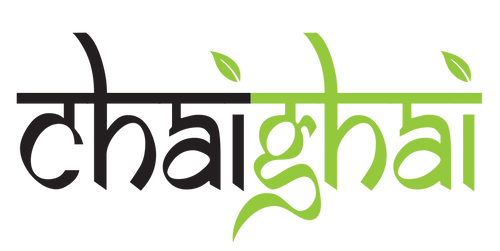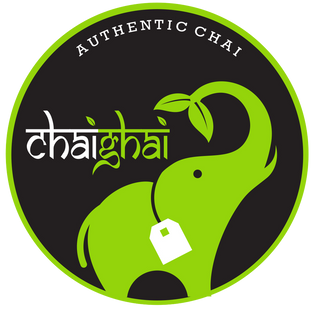“Spice a dish with love and it pleases every palate”- Plautus
The traditional Indian method of therapeutically brewing chai with a ratio of masala spices governed by your families’ palate, stirring milk in and having the entire elixir come to a boil dates back centuries. With that being said, the modernization of chai has produced an alternative brewing method. This still features steeping the tea and spices first, but now includes adding steamed milk at the end. The result is a chai latte. All of Chai Ghai’s recipes were passed down from Vimla Rani Ghai (Mummyji), and from our ancestors before her. She made it very clear growing up that it is always considered chai as long as you include the most important spice, Love. The beautifully warm orange colour of the chai, known as the “rang”, is also an important deciding factor for chai lovers. The aromatic flavours wafting throughout the house that tantalize the taste buds even before the first sip, can further attribute to whether it is considered authentic chai or not. This is the sensory experience that many enthusiasts enjoy as they steep their daily dose of masala chai and why it can be said that the practice of making it, does not merely elevate the senses, but lifts the spirit as well. Both colour and scent can be credited to the quality, quantity and variety of spices used in making the chai, along with the origin of the tea being used to brew it. Let’s take a look at what makes a traditional cup of chai, truly authentic.

Authenticity Criteria:
-
Spices
-
Tea
-
Scent
-
Love
Spices

The spices in chai, known as masala in Hindi can vary in their ratios depending on the different regions and family palate within India. Chai Ghai’s recipes originate from North East India, and were mindfully designed for optimal health benefits. Each one has a different ratio or variety of spices depending on the ailment it’s trying to cure.The uniqueness of each blend and the various health benefits of all of the masala spices infused together make chai an ideal choice for overall well-being. Consider the spices in Chai Ghai’s own Mummyji’s Masala Chai – Chai Ghai as an example, which include ginger, cinnamon, cardamom, black + white pepper, clove and nutmeg. These spices not only mix together to create a distinctive taste, they also offer health benefits such as boosting energy and immunity as well as preventing bloating, colds and naval congestion. Each mindfully designed recipe works to cleanse different chakras and allows energy to flow through them, enhancing your physical health, as well as cognitive and spiritual awareness.
Tea

Chai has been renowned for the quality of its tea base for centuries. The typical base is an orange pekoe, and can be drawn from a range of classes and origins. Although many people use tea bags at home, the traditional Indian method is usually prepared with loose leaf tea, and has the masala spices already mixed in it. When using tea bags, the spices are added separately, and can be brewed for 20 minutes or longer, before the tea bags are added. This can draw out more of the flavours present in the spices. Tea bag tea like Tetley is usually ground up, pour quality tea leaves and stems and does not represent a good option for chai. For this reason it is the intention of Chai Ghai to provide the best quality tea in every cup you brew. With Chai Ghai’s positive vibes collection, the orange pekoe base has the highest quality tea leaves originating from Cochin, India. Visually the chai’s colour can become more orange if the tea is more ground up, because it increases the surface area of the tea. This type of ground up tea can be found in Mummyji’s Masala Chai – Chai Ghai. Alternatively, whole tea leaves are found in Om Chai – Chai Ghai, which produces a lighter, rang, but also a more organic, full flavour. Neither type makes the chai less authentic, as long as the quality is outstanding in both. Whether brewed as a latte or in the traditional method, as long as the quality of the tea being used is an excellent orange pekoe, the cup is considered to be authentic.
Scent

Chai recipes are not just known for their amazing flavours but also boast incredible aromatic scents that tantalize the senses before the first sip is even tasted. Many traditional chai lovers like to boil the spices for a longer period of time before introducing the milk. This yields more flavour, but also creates a fragrance in the home or shop that is appetizing to the people in it. This aroma can create a warm sense of nostalgia for many people who grew up around chai. The authenticity of a cup of chai can therefore also be validated by the scent it produces. Again, regardless of whether it is a latte or traditional brew, the spices and tea create this inviting aroma. Therefore, the quality and brew time are major factors in determining whether or not the cup is sniff worthy. When walking into Nat's Coffee House (natscoffeehouse.ca), one of the first scents the nose will detect is the aromatic compilation of masala spices. This differentiates it from many similar cafes in Tsawwassen, and makes it almost impossible to refuse the urge to get a chai latte. The sensory experience that chai creates is without a doubt one of the most important features of this healthy and unique national drink of India.
Love

No matter the quality of the ingredients or the recipe used to make the chai, the most important ingredient is love. Vimla Rani Ghai passed this notion down with the utmost importance. The act of cooking the chai with love can create a mood altering experience when consumed. Brewing a cup of chai is considered an act of seva in Indian culture. Through this act the drinker will feel loved and appreciated by the brewer, which establishes a connection, so we can mindfully and lovingly pass on those intangible emotions to others in a tangible way. It is firmly believed in Indian culture that what you put in your body will impact how your body interacts with the universe. How your chakras will interpret energy is greatly reliant on whether they are cleansed or not. Therefore, no matter what brewing method is used the fundamental principal in gauging whether a cup is authentic or not, is whether the cup was brewed with love. Chai Ghai trains the many cafes that use our products, such as The Roasted Bean, to brew each cup mindfully with love. This can without a doubt create an entirely different cup of chai.

“Variety’s the very spice of life, that gives it all its flavour” – William Cowper

As the recognition of chai has progressed from the chaiwala’s of India to the rest of the world, different countries and regions have put their own spin on traditional chai in conjunction with what fits their population’s palate. From England where the dirty chai latte is said to originate to the US, Canada and Australia many large chain tea and coffee houses have offered up their own version of the chai latte. Further methods of trying to diversify traditional chai can be found in the dirty chai latte. This popular option gets its name from the shot or two of espresso added to its contents, putting the amount of caffeine found in a dirty chai latte on par with a cup of coffee. Regardless of which method of adding milk is used to make a chai latte, the spices are far more important to the authenticity of the chai. With this popularity increase those interested in the healthy aspects of chai can always try brewing their own at home using more traditional methods. Chai Ghai’s spectrum of vibes make it easy to prepare and share with family and friends, bringing people together, as chai was intended to do.
Daniel Laporte says it best, “the universe cannot resist authenticity.” The adoption of these variations by the people in this universe validate them as authentic and are original in their own way. Chai really has the power to bring people together, from families assembling around a fire and sharing a cup of chai, to friends enlightening each other on their worldly perspectives while enjoying their favourite version of India’s national drink.

When considering what constitutes a real cup of chai first look to the spices with all of the flavour and healing properties they offer. Secondly, consider the quality, type, and origin of the tea. Finally, think of the feeling a cup of chai brings when its fragrant aroma contacts the senses and reaches deep into your spirit to fill your heart with positive vibes. When chai is prepared with the love we want to share with the people around us, it can be an adhesive glue, bringing everyone together. When we do things with good intentions, they immediately become authentic. Whether you steam or boil the milk, Chai Ghai has a rich spice blend prepared and mindfully mixed with love that is sure to suit your palate.






